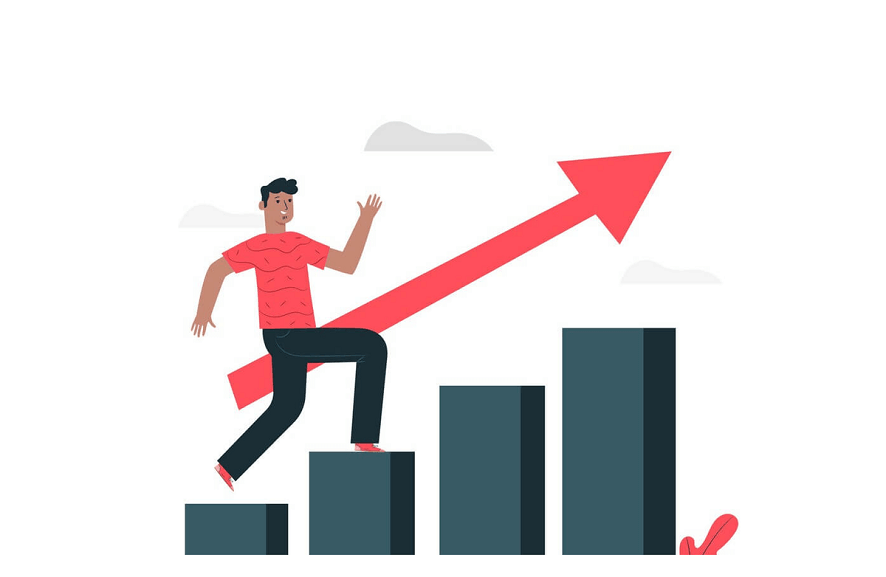In the world of business, success is often determined by boosting revenue and offering outstanding customer experiences. And upselling is one of the most effective strategies for achieving both of these goals. But what is upselling? Here, we will explore the concept of up-selling, its benefits, and the difference between up-selling and cross-selling.
What is Upselling?
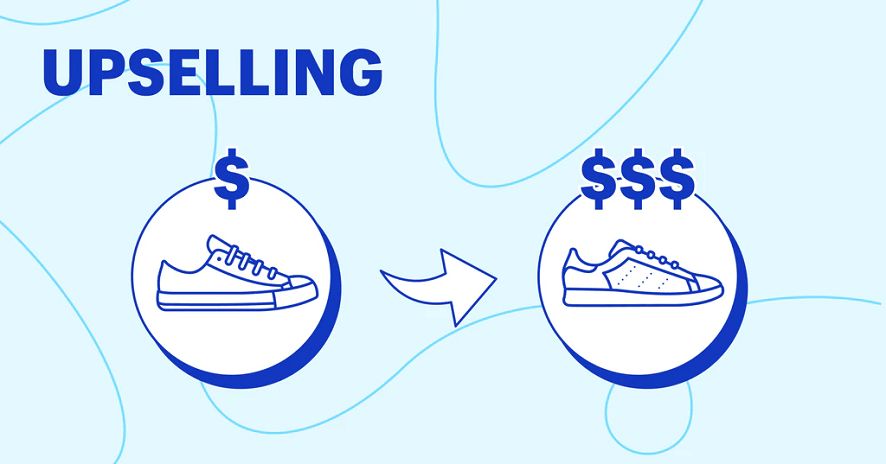
Upselling is when a seller introduces more expensive and superior products or services to a seller and causes them to spend more than they originally planned. Upselling is seen as an effective sales technique. It is often applied because it can help businesses sell products with higher profits without causing discomfort to customers.
By highlighting the benefits and added value of upselling, you can create win-win situations in which the customer receives a superior solution while the company increases revenue.
Why is Upselling Important?
Upselling is a job that requires little time but brings in extremely high revenue. You will not need to find new customers, but just maximise the revenue from customers who already use your product. This is simply because you only need to introduce products that directly benefit your customers based on a built-in relationship.
You can upsell by selling products related to the product the customer has purchased, don’t include unrelated products to increase sales. Upselling is only effective when you recommend products related to the goods customers need, thereby bringing in conversions.
Benefits of Upselling
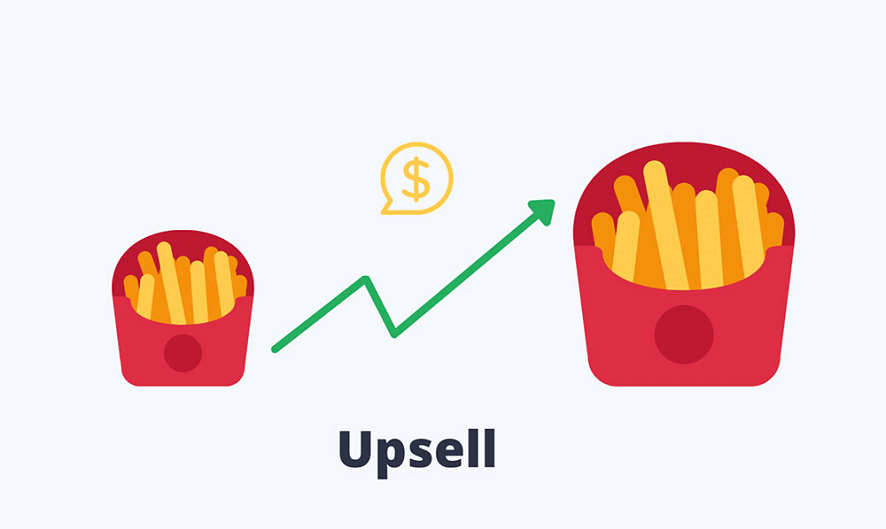
Up-selling is a popular sales strategy that brings a lot of benefits to businesses. This form not only brings profits but also improves the customer experience. Here are some key advantages of upselling that you need to know:
Increase Profits
As customers spend more, revenue will inevitably increase. Therefore, instead of focusing on finding new customers, up-selling businesses can exploit existing customers. This also helps to reduce marketing costs significantly. If the quality of the product or service is good, customers will not hesitate to spend more money, and this is the revenue source that businesses need to focus on.
Enhanced Customer Satisfaction
By recommending products or services that complement a customer’s initial purchase, businesses can provide tailored solutions to better meet their needs and expectations. There is nothing better than a tactic that allows customers to voluntarily choose and spend according to their ability. This helps customers be satisfied with the buying experience.
Customer Loyalty and Retention
The next benefit of a good customer experience is customer engagement and loyalty. Up-selling not only helps increase short-term revenue but also gives businesses long-term customers. Usually, when buying a product and having a good experience, customers will always choose your business next time to avoid taking risks. And this is the sustainable and long-term benefit that up-selling brings.
Improve User Experience
User experience is an important factor. Customers are more likely to return if they have the best experience with your business. Sometimes, they can also help you spread the brand, and attract more users.
Moreover, up-selling is one of the most prominent methods of improving the user experience. Because when upselling occurs, customers are upgraded to a more advanced, more complete, and more attractive version of the product. They experience more interesting features, and capabilities that were not available before.
Select Potential Audience
Another important role of upselling for businesses is to distill the target audience from their customer files. Regular customers just want to experience the product during the trial period or the free, low-cost versions.
Meanwhile, potential customers will be the ones willing to upgrade the product to a more expensive, premium version. By up-selling, you can satisfy many different types of customers, while also filtering out who your potential audience is. From there, you can come up with special policies and approaches to focus on serving these potential customers.
How to Upsell and Increase Sales

To upsell your customers and increase sales effectively, consider implementing the six following strategies:
- Know Your Customers: Understanding your consumers’ preferences, pain spots, and goals is important for successful upselling. Customize your ideas to their individual needs and show how the upsell will provide value or solve their problems more fully.
- Recommend Relevant Upgrades: Provide customers with upsell choices that properly enhance their original purchase. The upsell should be reasonable and complementary, with tangible benefits that correspond to their aims and wants.
- Highlight Unique Selling Points: Clearly describe the upsell’s unique features, benefits, and increased value. Help clients understand why it’s worthwhile to invest in a more expensive choice and how it will improve their overall experience.
- Provide Incentives: Offer promotions such as discounts, exclusive access, or bundled packages to sweeten the transaction and make the upsell more appealing. Show customers how much more value they will receive if they take advantage of the upsell offer.
- Personalize Recommendations: Tailor your upsell recommendations depending on the preferences, purchase history, or browsing behavior of each consumer. Utilize customer data and analytics to find upsell opportunities and provide customized recommendations.
- Follow-Up and Follow-Through: Continue to provide excellent customer service after the upsell. Make sure the consumer is satisfied with their purchase and provide continuing assistance. This builds trust and raises the possibility of future upsells or recommendations.
Difference Between Upselling and Cross-selling
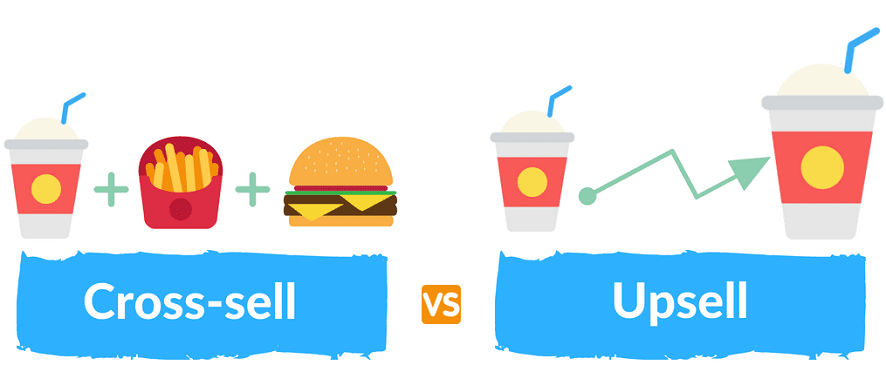
Many people often confuse upselling and cross-selling and assume that they are interchangeable. However, these are two completely different sales techniques.
- Upsell: Once you’ve chosen a computer you like, you’ll likely want to buy some other accessories to enhance the processor. At this point, the seller will try to direct you to another product with a higher configuration, which is also more expensive, of course. They’re basically wanting customers to spend more on the same product or other enhanced products.
- With Cross-selling: After you have upgraded the processor, you will then be suggested by the salesperson about other related devices, such as a printer. Thus, it can be understood that cross-selling products means providing items related to the original product to increase order value. To know more about cross-selling, read our article: what is Cross-selling?
In short, upselling is selling things that are more expensive than the product that customers intend to buy, while cross-selling is a suggestion for customers to buy more products and services related to something they have previously selected. Both upselling and cross-selling are extremely important in increasing sales, and as such, they often go hand in hand.
3 Key Principles That Make It Work

To apply up-selling tactics, businesses need to build certain foundations. And here are a few examples:
Build Customer Trust
The only way to build customer trust is to find out what they want. In order to provide the right products to meet the needs and ensure quality. When customers have trust, applying up-selling tactics will be much simpler. Moreover, when you understand your customers, you can also predict market needs, increasing the competitive position of your business.
Track The Customer Journey
In the first stage of applying an up-selling strategy, you need to observe customer reactions. Track customer behavior from a product approach to selection and payment to measure the effectiveness of up-selling tactics. This is trackable in CRM. An integrated CRM will help businesses track customer behavior and allow employees to actively participate in the customer journey to provide support at the right time.
Focus On Consulting
The final rule lies in the art of communicating with customers. Instead of just selling, focus on consulting and suggesting things to customers. The staff needs to use their expertise to introduce customers to the best solution, incorporate up-selling tactics, and suggest additional products. However, don’t forget to monitor your guests’ reactions as well. If the customer is not satisfied, you should focus only on the product you are selling.
Upselling Example
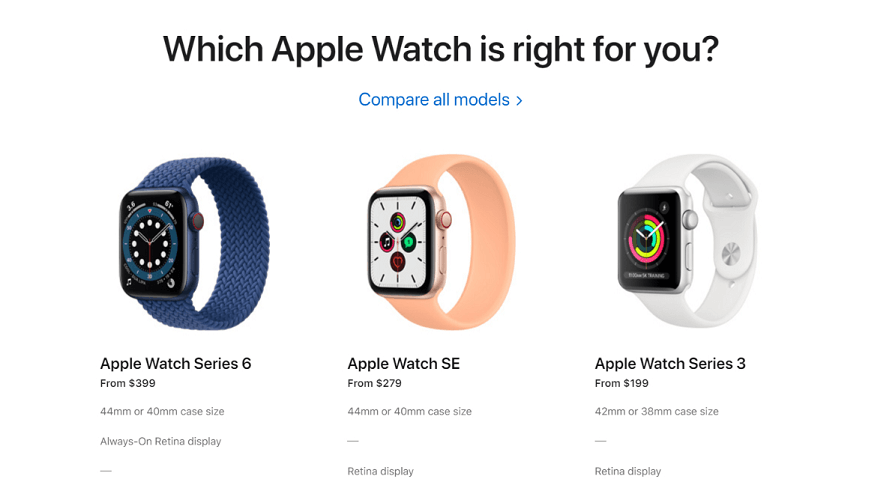
There are many ways to drive your customers to buy more expensive products. It is important for your brand to be honest with its customers. Let’s learn how to implement an Upselling strategy with some successful examples from the past:
Exchange Old For New
Apple uses the old-for-new strategy to increase the number of products sold very effectively. Customers always want to exchange their old iPhones for a new one that is 80% cheaper.
Old for new is a great Upselling strategy that can entice customers, even those with limited budgets, to buy newer products. And this doesn’t just work for the tech industry, you can use the same approach to increase sales if it can be reused, resold, or recycled from an old product.
Give A Reward
Domino’s doesn’t want to waste time — the company uses every opportunity to exceed customer expectations and sell more. Domino’s rewards system incentivizes consumers to buy more pizzas to earn points in return for free treats.
Advertise Similar Products
In case you are new to using Upselling strategy, this is the safest way for you. You just need to select some similar products with better features and higher prices and put them on the product promotion page. For example, Lancôme adds highly purchased items at the checkout page.
The checkout page is another place to showcase additional products for Upselling. Customers do not have to navigate to another page that disrupts payment operations. Give them valuable suggestions when their order is incomplete.
Make A Comparison
Upselling works best when it shows customers how they would benefit from paying more. Suggesting extras on more expensive products is a good trick you can use. The benefits that you list far outweigh the costs incurred by the user when buying individually, which will help customers feel more economical
WordPress has suggested rates in the services comparison list. They consider the more expensive purchase to be the best option and outline the financial benefits users will get from that purchase — one-time payment and lifetime support.
Final Thoughts
To sum up, up-selling helps customers not feel forced to buy. Instead, customers will realize their own needs, make their own choices and be satisfied with the products they have. This has led to up-selling tactics being applied by many businesses. And if done correctly, the business will certainly gain profits and increase its competitive position in the market.




